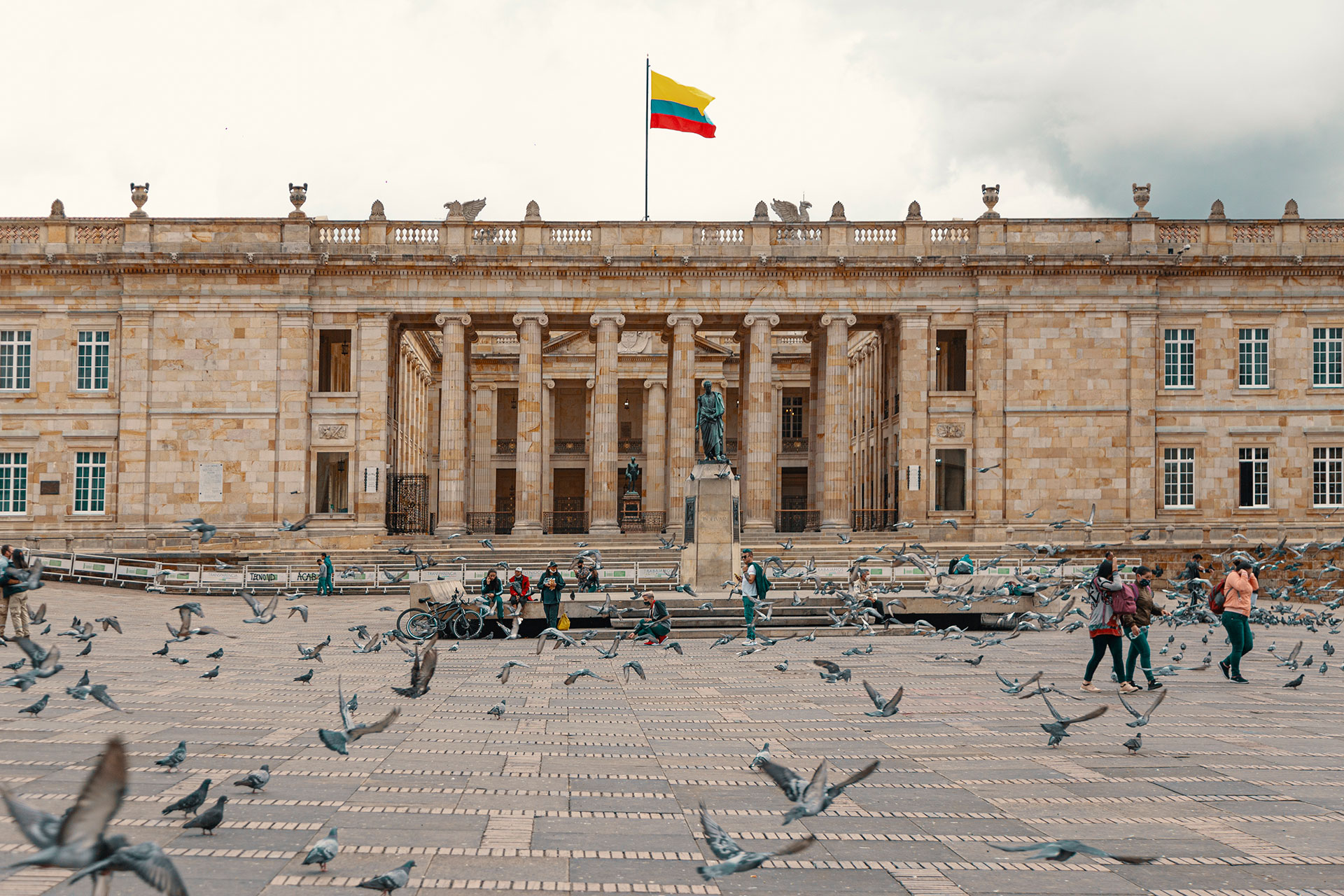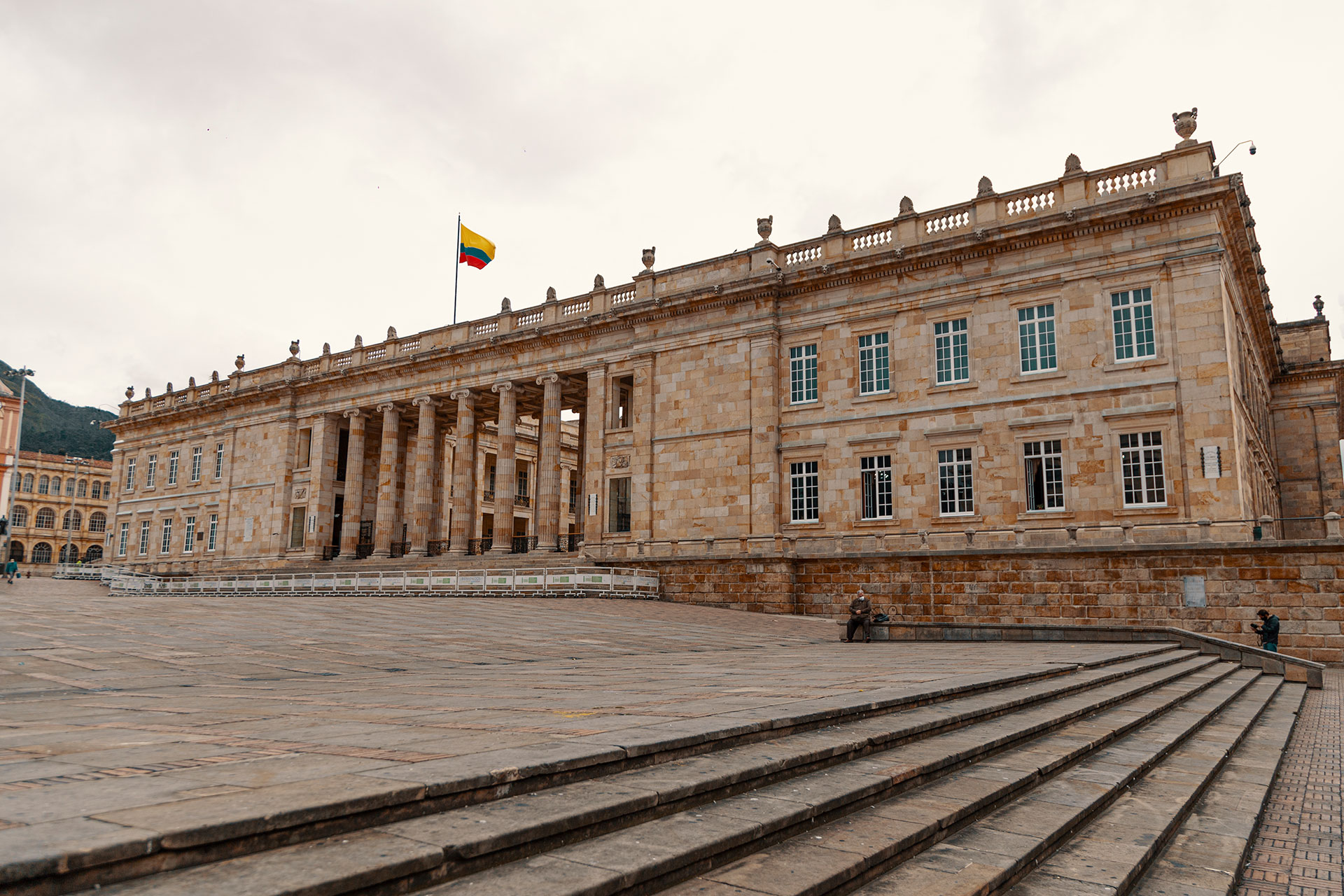Discover the history and culture of Bogotá. Explore its heritage!
Discover the history and culture of Bogotá. Explore its heritage!




Jubilee 2025 Churches Tour
JUBILEE CHURCHES TOUR 2025
A unique spiritual and cultural experience!
In this incredible and unforgettable trip, discover the religious art and history of the emblematic sanctuaries of Cundinamarca and Boyacá and learn how to make curd.
Departures: Second Sunday of each month (2025).
Meeting Point: Los Héroes Station -TransMilenio, Bogotá
Departure time: 6:00 a.m.
Our destinations:
Colpatria Tower Viewpoint
Colpatria Tower Viewpoint: Live Bogotá from the heights.
Discover the best view of Bogotá from the viewpoint of the Colpatria Tower, the city's most iconic skyscraper. At 196 meters high, enjoy a unique landscape that extends to the Eastern Hills, La Candelaria, and the International Center. It is ideal for taking incredible photos and living an unforgettable experience in one of the city's most emblematic tourist spots.
Includes:
For you who are a traveler, the Triple Combo has arrived!
Combo Triple (4 days / 3 nights)
An unforgettable experience that combines nature, history, and culture:
Day 1: Guatavita & Catedral de Sal de Zipaquirá.
Explore the magic of Guatavida Lake, the birthplace of El Dorado legend, and visit the stunning Salt Cathedral of Zipaquira, a masterpiece of engineering and subway art.
Day 2: Monserrate & La Candelaria.
Enjoy the panoramic view of Bogotá from Monserrate, and walk through La Candelaria, the most representative historical neighborhood of the city.
Bike-exploring Bogotá's localities
Bike tours through places that have marked the history of some of the capital's localities. Culture, gastronomy, knowledge exchange, and many surprises await the participants in these activities. .
Route 1: Teusaquillo - Saturdays from 9 a.m. to 11 a.m.
Route 2: Engativá - Saturdays from 1 p.m. to 4 p.m.
Route 3: Usaquén to the Historic Center - Second Sunday of each month.
You can also put together your group, and choose the route, date, and time. We will handle the rest.
Bogotazo Tour: The must-see to relive history
Discover some of the representative places associated with this event that marked Colombia's history in a guided tour through downtown Bogotá. Under the slogan "No repetition," we will share stories of other events that are part of the historical memory. The activity is led by journalists from the Rutas del Conflicto website and specialized guides from Mil Estaciones.
Includes:
- Acompañamiento de guías, póliza de asistencia, registro fotográfico, souvenir.
Not included:
Bogotá: The South-America Athens
4 days - 3 nights
Includes:
- Transfer Airport - Hotel - Airport.
- Transport in special service vehicles according to the number of people (car, van, or minibus).
- Transport in special service vehicles to the experiences.
- Lodging 4 days - 3 nights EMBASSY SUITES BY HILTON HOTEL.
- Gym, Wifi, Sauna, Turkish Bath.
- 3 buffet breakfasts.
- Professional guide.
- Professional accompanying guide.
- Medical assistance.
Experiences included:
Santander Park
The Carrera séptima and Calle 16, in the area once known as "Plaza de las Hierbas," has significant historical importance for the entire country. According to some historians, on August 6, 1538, this site was where Bogotá was founded in a simple ceremony.
City Tour of Bogotá with Monserrate.
Includes:
- Private transportation (Hotel – Experience – Hotel).
- Transport in special service vehicles according to the group size (car, van, or minibus).
- Professional local guide.
- Medical assistance
Meeting Point: Hotels in Bogotá.
Included experiences:
Foundational Square of Fontibón
During pre-Columbian and colonial times, Fontibón was a strategic territory of passage and communication for the Muisca population. From the 16th century, it served as a transit point for Spaniards, facilitating the movement of mule trains, as well as the transportation of goods and travelers between Santa Fe de Bogotá and the Magdalena River.

